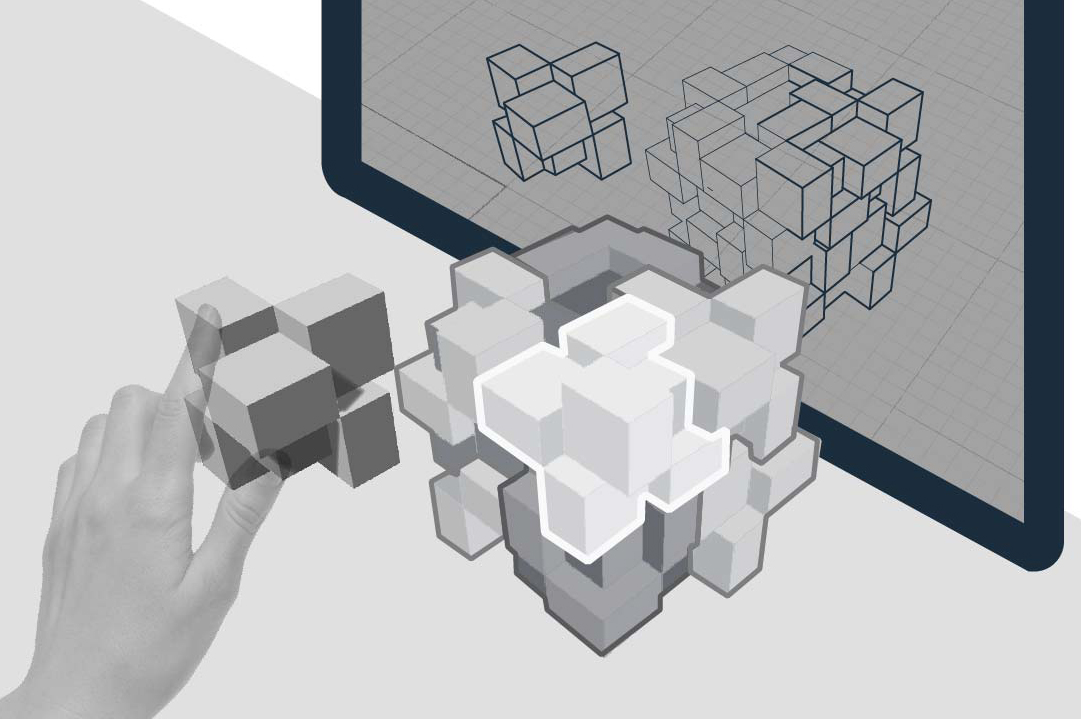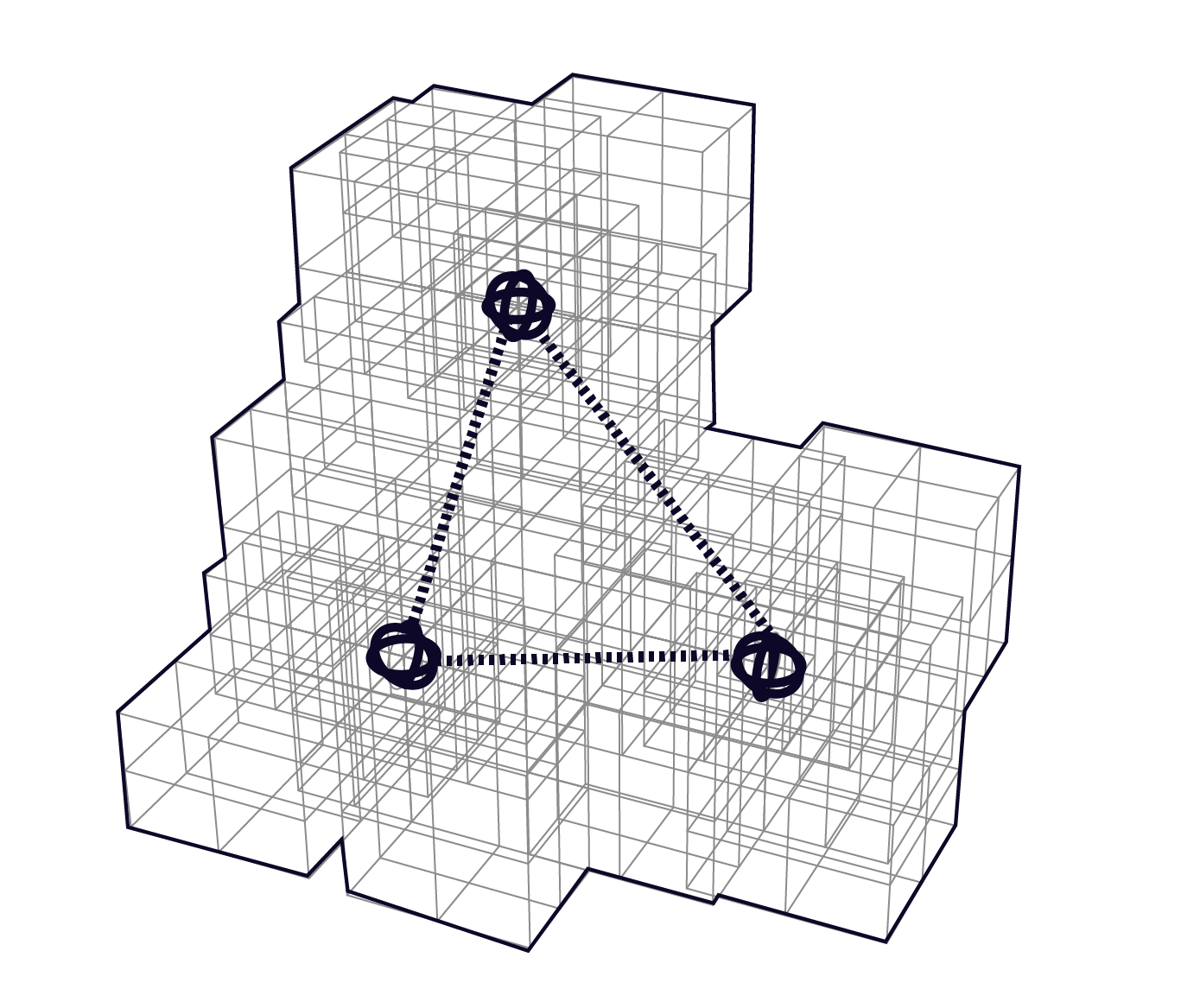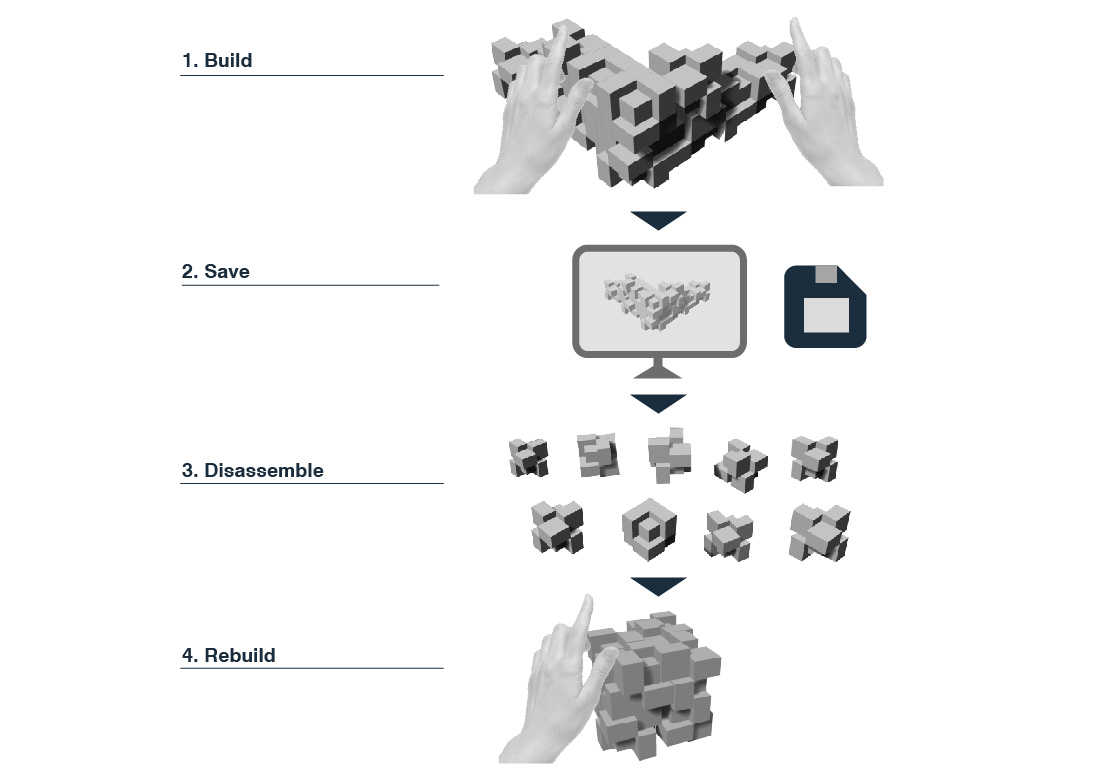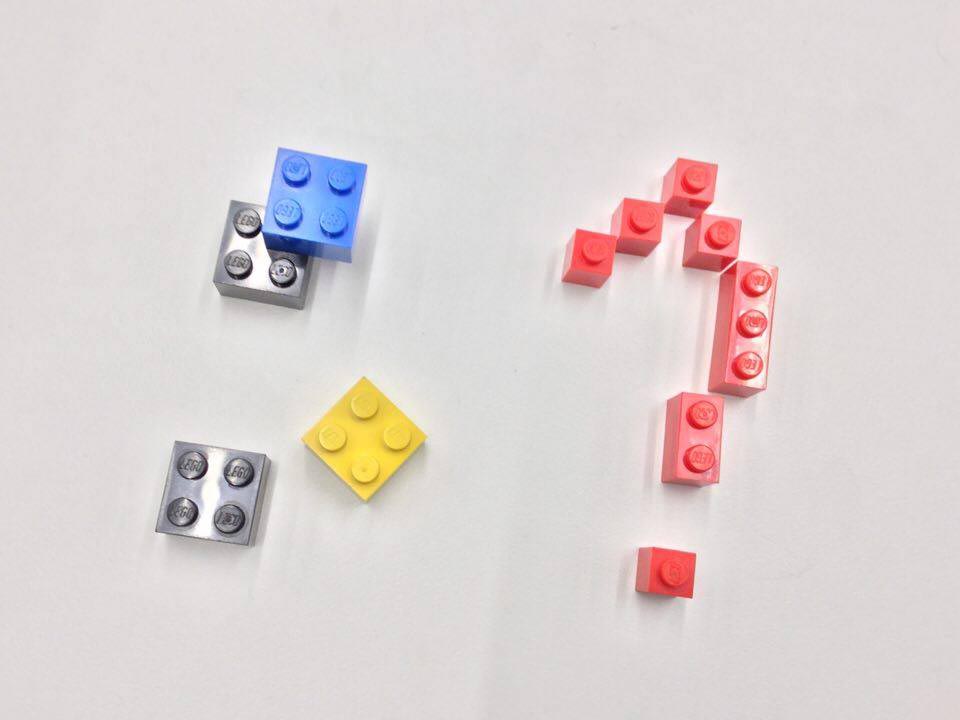Maroula Bacharidou
MAS.863 | How to Make (Almost) Anything
Qubricks
Making physically and saving digitally
Through my final project, my goal is to bring together two different design processes, that of hands-on experimentation and that of experimentation through the use of 3D modeling software. I want to make a design kit that will give users the opportunity to build physical models and "save" (record, remember, reproduce) them in digital files.

Figure 1. Proposed model of interaction between the user, the building blocks and the computer
Qubricks are interlocking, space-filling building blocks that track, record and remember human action in digital files. I gave them this name because of their shape; they are cube-like bricks, but split into smaller, symetrically distributed rectangular solids that increase the modularity. They could be described as legos that exist in both physical and digital space.
- As physical objects, they are cube-shaped building bricks split in four rectangular solids in order to interlock with each other from every possible side. Their design allows them to shape different configurations and syntheses across different scales, with different materials, for different fabrication purposes/functions.
- As digital objects, they the senseable, traceable, constructive entities of a versatile system that can assemble, store, archive, categorize, reproduce and give how-to-make instructions for different forms/ block configurations.

Figure 2. The interaction can occur in two or -ideally- in three dimensions.

Figure 3. The proposed model of interaction requires the embedding of electronics inside the digitizable physical objects

Figure 4. Build, "save", dissasseble, rebuild - or share your project with other builders.
